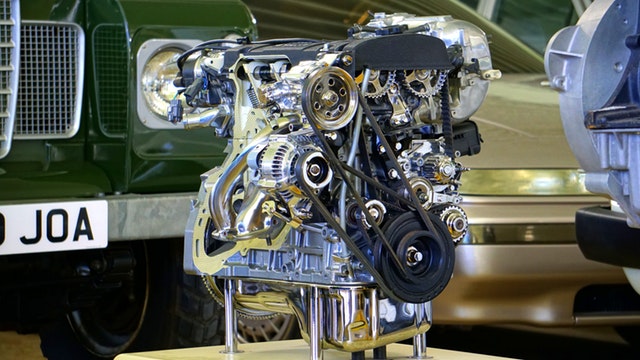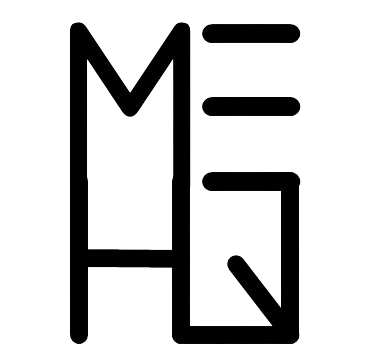Do you know what a mechanical engineer job description looks like? Well once you read the post below you will!
First, if you’re looking to launch your own blog and start writing articles yourself, no matter what the subject, you can launch your blog with Bluehost for just $3.95/month.
Start creating content and launch your blog with Bluehost.
Mechanical engineering is widely known as one of the most ancient and vast engineering disciplines. Mechanical engineers research, design, manufacture, build, test and install mechanical/thermal devices/systems, including machines, engines and tools. We will go through what a mechanical engineer job description includes in the various industries that a mechanical engineer can find themselves in.

A “mechanical engineer job description” involves designing and supervising the creation and manufacturing of many products ranging from medical devices to batteries. They also are involved in the designing of power-producing machines, such as: internal combustion engines, steam and gas turbines as well as electric generators. Power-using machines like air-conditioning systems and refrigerators. Building machines are also designed by mechanical engineers, examples of these are escalators and elevators. Similar to these, material-handling systems like conveyor systems and automated transfer systems are also designed by these tremendous engineers.
Computers are used extensively by mechanical engineers, like many other different types of engineers. Computers and CAD (Computer Aided Design) programs and similar software can help mechanical engineers run simulations, generate specifications for parts, create and analyse designs and test how a machine is expected to work. Some of the programs used by mechanical engineers are AutoCAD, Revit, Inventor and Fusion 360, among many others.
Job Responsibilities

Within a mechanical engineer job description, the key responsibility is taking a product from being a theoretical idea and bringing to the physical marketplace. Determining the effect of environmental of the thermal effects and forces on a product or its parts is also a must for any mechanical engineer.
It really comes down to problem solving with a hands-on understanding of the work being performed, involving the design of the product/part with regards to the functionality, durability, aesthetics and the efficiency of the manufacturing process. Strong leadership, management and conflict management skills are also vital in order to oversee a successful product to the marketplace.
A mechanical engineers duties can vary depending on the type and size of the employer:
- Designing mechanical/electromechanical products by researching and testing manufacturing and assembly methods and materials, and soliciting observations from operators.
- Evaluating mechanical/electromechanical systems and/or products by applying principles of mechanics, thermodynamics, fluid dynamics, hydraulics and materials science.
- Determining feasibility and creating testing methods in order to confirm system and product capabilities.
- Testing finished products and system capabilities; confirming fabrication, assembly, and installation processes in order to verify product and system quality.
- Creating new and adjusting existing equipment for the fabrication, construction, assembly, and installation of components, as a consequence of this manufacturing processes are developed.
- Providing engineering information by answering questions and requests.
- Coordinating maintenance and repair services; following manufacturer’s instructions and established procedures; and requesting special services. This keeps equipment operational.
- Attending educational workshops, reviewing professional publications, establishing personal networks, participating in professional societies. This maintains their technical and professional knowledge.
- This should go without saying – contributing to their team by accomplishing tasks and working towards the overall betterment of the team itself.
- Training in technicians and overseeing their progress.
Required Skills
Training and experience in the mechanical engineering field will provide you with a number of “hard skills” (as recruiters call them), these include testing, simulation and CAD etc. (this will be used in the activities listed above). A thorough understanding and knowledge of accepted industry standards is also needed. Extra skills can be learned and certifications earned through courses taken on a platform like LinkedIn Learning, you can try it for free for the first 30 days!
However, “soft skills” are also a necessity to a mechanical engineer. When applying for jobs or looking through job postings it is important to be aware of both you hard and soft skills as they are equally important. Here is a short list of some soft skills that will be of use to a mechanical engineer or engineer-in-training.
Problem Solving

Solving client’s problems will always take up a lot of time in a typical mechanical engineer’s week. Mechanical engineering itself is the improvement of mechanical or thermal devices, making them more efficient or the addition of different capabilities. Solving these problems requires some hard skills, but the analytical ability needed to solve problems is a soft skill.
Creativity
Designing and developing products is a key responsibility for mechanical engineers. These products can range from environmentally friendly power plants to robots and everything in between. Creativity is heavily involved in conceptualizing, developing and creating brand new products.
Communication
As mechanical engineers generally don’t primarily work with other engineers, the ability to communicate and convey any ideas, issues and priorities is important. Clients will also need to be shown and have the workings of new products explained to them. This will have to be explained and put across to the clients in “non-engineer” language, so that they fully understand what they will hopefully be paying for.
Collaboration
Mechanical engineers usually work on a team, in a professional office environment with other engineers and professionals. A lot of engineers work on a team and need to be able to work efficiently and well in their role in this team. There will most likely be a broad range of people in a team, and collaboration with everyone is essential, even across different functions.
Mechanical engineers often work with architects, IT professionals and other engineers, and in order to be the best mechanical engineer you can be, you will have to be able to collaborate with diverse sets of people.
Mathematics
Of course, mathematics is not a soft skill. But the aspect of having an awareness and aptitude of mathematics is what is being referred to here. To excel in the engineering field you have to like mathematics (and physics) and be comfortable with it.
Bottom line, no matter how strong your desire is to design the next robot maid for your 400 sq.ft. apartment, you will never be able to complete this without an understanding of mathematics.
Careers
If you are looking for a career in mechanical engineering, you can find out everything you need to know here.
Thank you very much for being here – we appreciate you taking the time to read our content. If you have anything to add, please feel free to leave a comment down below, and sign up to our newsletter for more of the same!
You can also follow us on LinkedIn, Facebook, Twitter, and Instagram so you can stay up to date.



